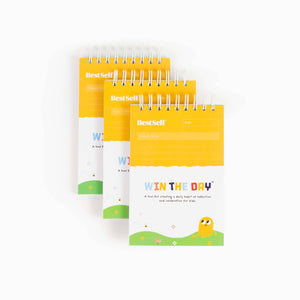Resilience is the ability to bounce back from challenges, and for school-age kids, it's a skill that can make a huge difference. As children grow, they encounter various obstacles in their school and social lives. Learning to navigate these hurdles with confidence and strength helps them become well-rounded individuals. Encouraging resilience in children means giving them tools to tackle problems head-on and confidently move forward.
Developing resilience doesn’t happen overnight. It takes consistent encouragement and guidance from adults. By introducing activities and practices that promote resilience, children begin to understand how to manage setbacks. They learn to solve problems and find creative ways to deal with tricky situations. This not only builds their confidence but also enhances their ability to think critically and make sound decisions.
Creating a nurturing environment plays a vital role in building resilience. When children feel supported by families, teachers, and friends, they feel more secure in taking risks and trying new things. A positive atmosphere allows them to express their feelings and ask for help when needed, laying the foundation for emotional growth and resilience to thrive.
Understanding Resilience in Kids
Resilience is the ability to recover from difficulties, an essential trait for school-age children. It helps them cope with everyday challenges like solving math problems, dealing with conflicts with friends, or trying out for sports teams. Resilience empowers kids to face these obstacles head-on without feeling defeated. This skill is crucial because it builds a foundation for lifelong success and emotional well-being.
When children are resilient, they handle setbacks and challenges more effectively. Instead of giving up, they think of setbacks as learning experiences. This mindset allows them to develop grit and perseverance. For instance, if a student receives a poor grade, resilience encourages them to analyze what went wrong and to improve. By learning to navigate challenges, they become more adept at managing stress and overcoming future hurdles with grace and confidence.
Resilience also plays a significant role in building confidence and problem-solving skills. Kids who have resilience believe in their ability to solve problems and trust their instincts. This self-assurance leads them to tackle problems with a can-do attitude, which is vital for personal growth. As they develop problem-solving skills, they begin to explore creative solutions and feel more in control of their lives. This combination of confidence and skill ensures they are prepared to take on the world.
Practical Ways to Foster Resilience
Encouraging resilience in children can be seamlessly integrated into everyday routines. Simple practices can set the stage for resilient behaviors, such as:
- Setting achievable goals: Teach children to set small, realistic goals to build confidence when they achieve them.
- Encouraging independence: Allow kids to make choices and decisions, letting them learn from their outcomes.
- Praising effort, not just the outcome: Focus on the hard work and perseverance kids put into tasks, rather than just celebrating success.
Activities and games also provide effective ways to nurture resilience. Games that involve problem-solving, such as puzzles or team challenges, promote fun engagement while teaching valuable lessons. Role-playing different scenarios helps kids practice handling stressful situations and boosts their problem-solving skills.
The impact of consistent support and encouragement from adults is paramount in building resilience. Positive reinforcement from parents, teachers, and other role models strengthens a child's ability to deal with adversity. Encouragers of resilience should ensure kids feel understood and valued by actively listening and showing empathy during challenging times.
By integrating these practices and activities, adults help children cultivate resilience, enabling them to face life's challenges with bravery and resourcefulness.
Teaching Problem-Solving Skills
Teaching kids problem-solving skills is crucial for fostering resilience. Start with simple strategies that help them learn independently. Encourage them to break down a problem into smaller parts, making it less overwhelming. This approach helps them tackle each piece step-by-step, building confidence as they go. Encourage brainstorming sessions where they can freely express ideas, allowing creativity to flourish.
It's important for kids to understand that making mistakes is part of learning. When children feel safe to fail, they gain valuable insights. This experience teaches them persistence and adaptability. Instead of solving problems for them, guide them through the process. Ask open-ended questions that prompt them to think critically about possible solutions. This technique encourages reflection and helps them draw conclusions from their experiences.
Another effective way to teach problem-solving is by guiding kids to find multiple solutions. Show them that most problems can be approached in different ways and that flexibility is a strength. By nurturing this mindset, they will learn how to weigh the pros and cons of each option, fostering better decision-making skills. This practice equips children with the tools and confidence to face any challenge head-on.
Building a Supportive Environment
A supportive environment is vital for nurturing resilience. A positive and nurturing atmosphere gives children the confidence to explore, learn, and grow without fear of judgment. This environment should be a safe space where kids feel valued and encouraged to express their emotions.
To establish a supportive environment, build strong networks of support among peers and adults. Encourage friendships and group activities where children learn to collaborate and support each other. Adults can play a significant role by being approachable and available for guidance. This network empowers kids, showing them that they are never alone in facing challenges.
Open communication is key to achieving this environment. Allow kids to voice their feelings and concerns without interruption, validating their experiences. This practice fosters trust and helps them manage emotions. Practical ideas like family conversations during meals or regular check-ins with teachers can establish reliable communication channels.
Conclusion
Helping children build resilience equips them with essential life skills that will serve them well into adulthood. By understanding resilience, engaging in practices that promote it, teaching problem-solving skills, and creating supportive environments, children develop the ability to manage adversity with strength and confidence. These skills contribute to overall emotional and social well-being, building a foundation for lifelong success.
To support this journey, consider exploring tools from BestSelf Co. that can facilitate personal growth and development. Our products are designed to help children and adults alike harness their potential, set achievable goals, and make meaningful progress. Dive into our range of kids’ journals to find what resonates best with you and your family, and take the next step in fostering resilience together.






































